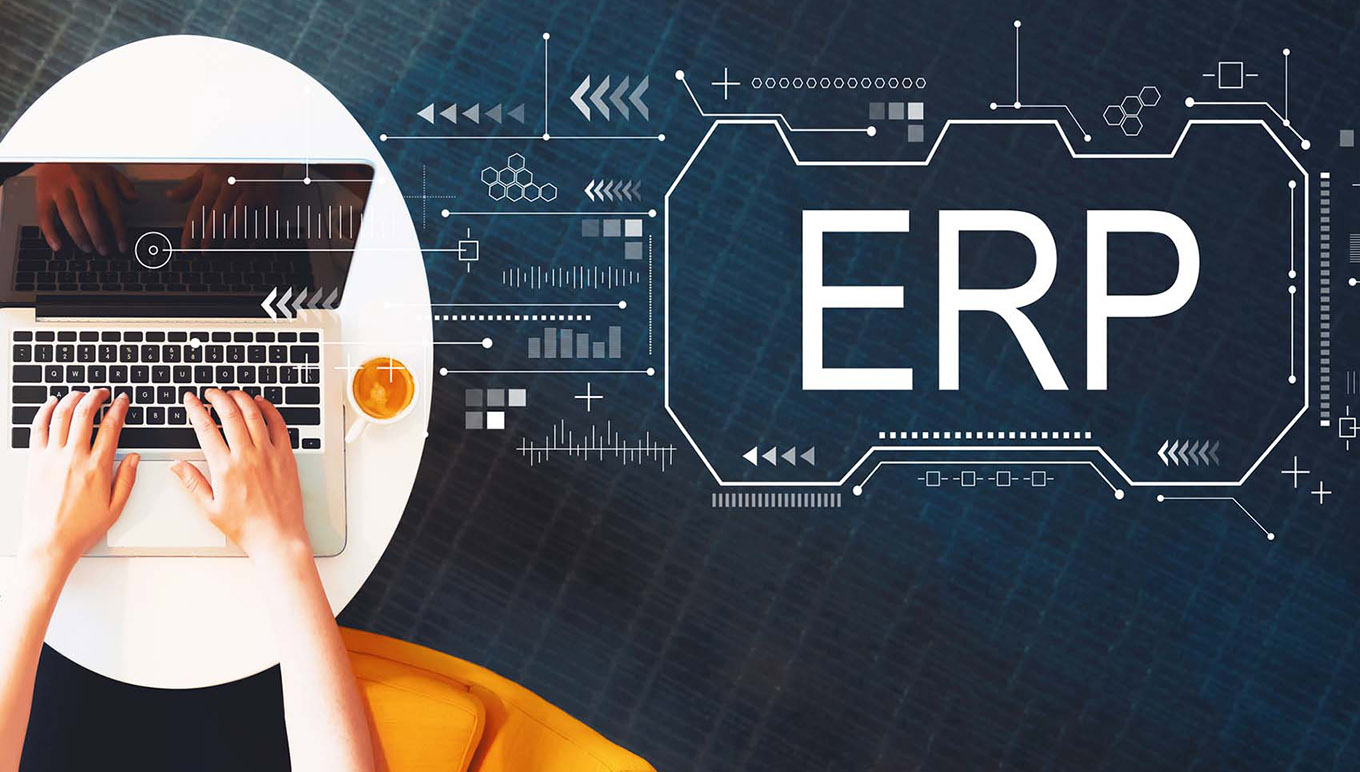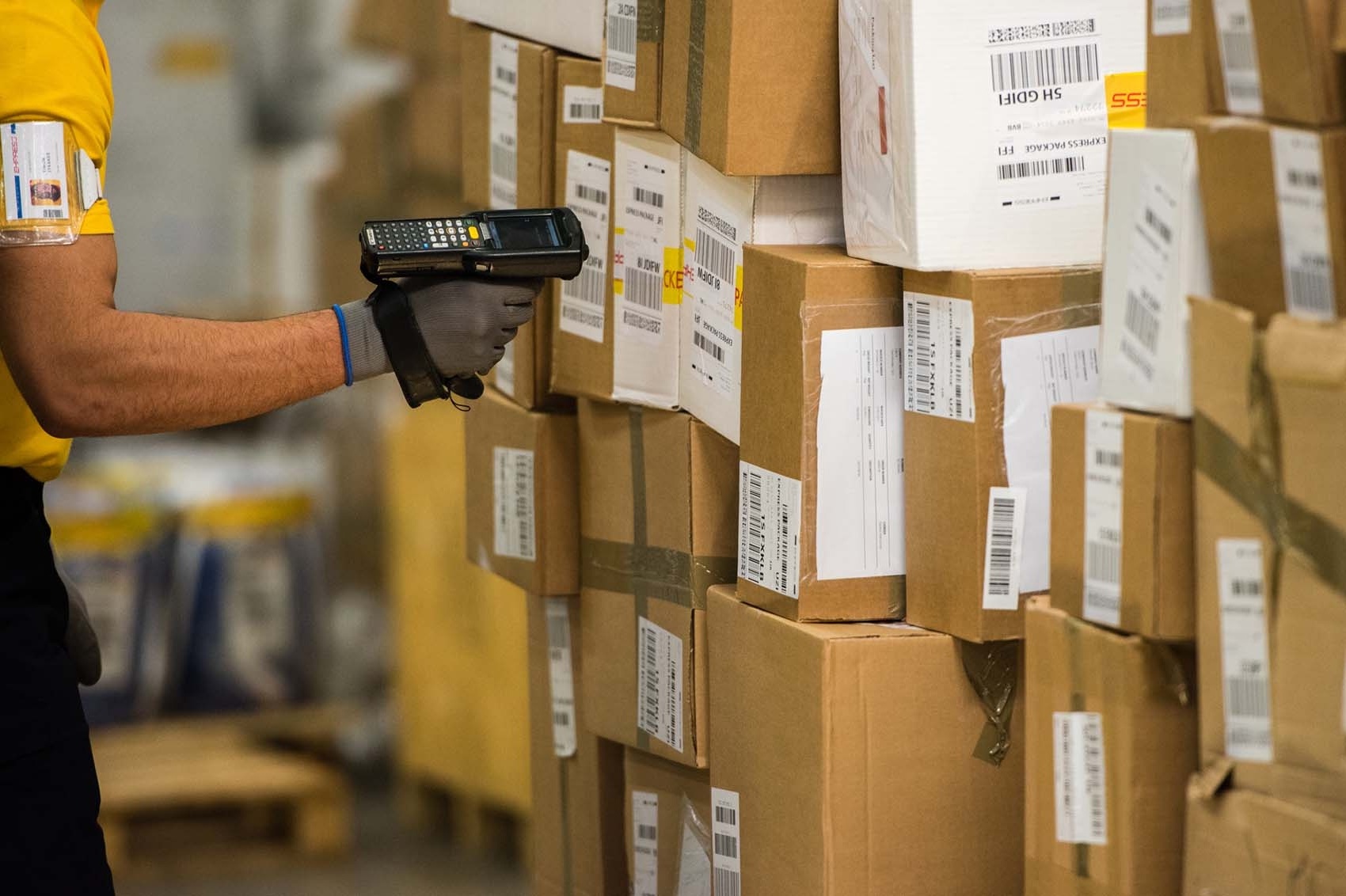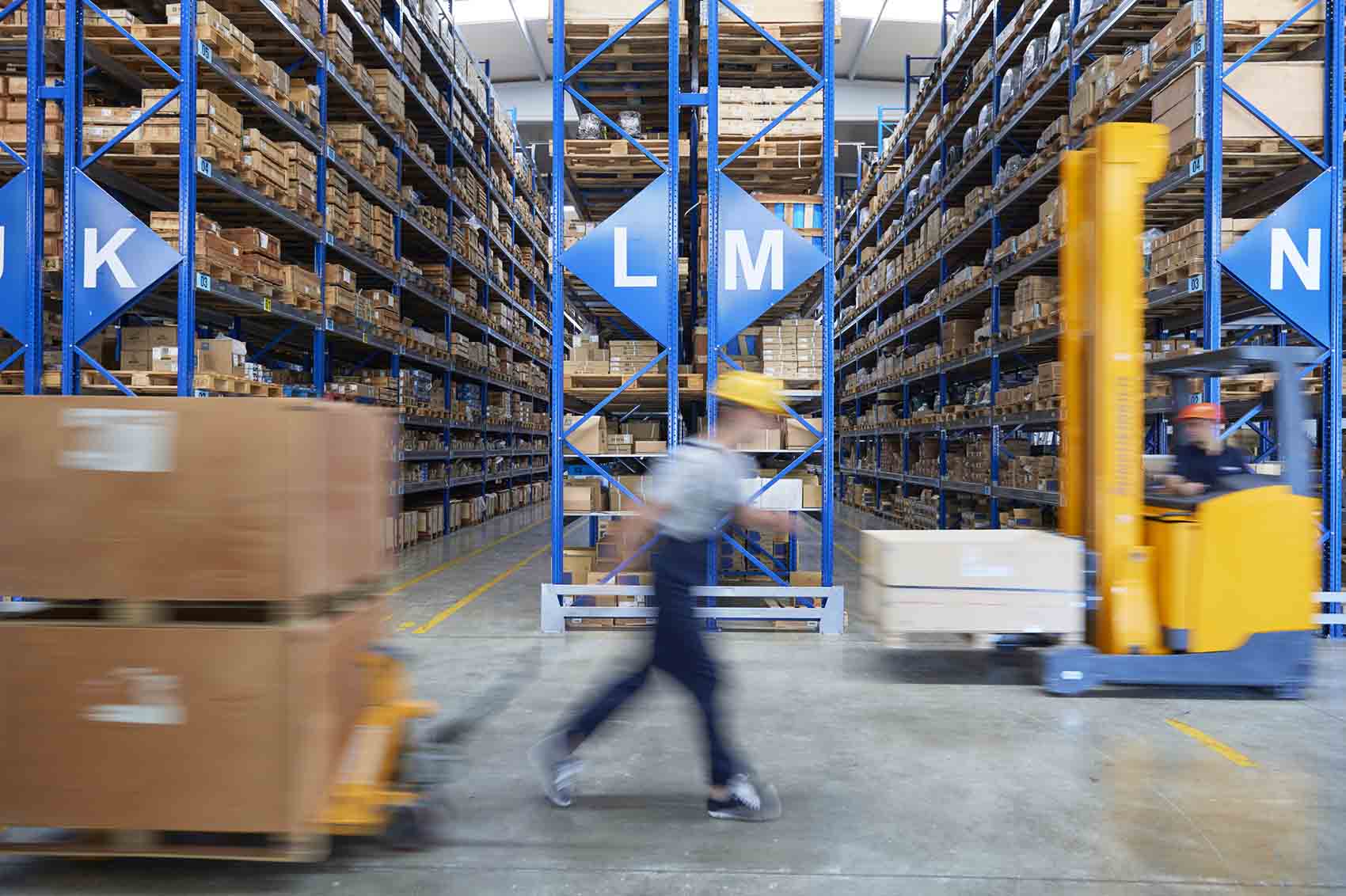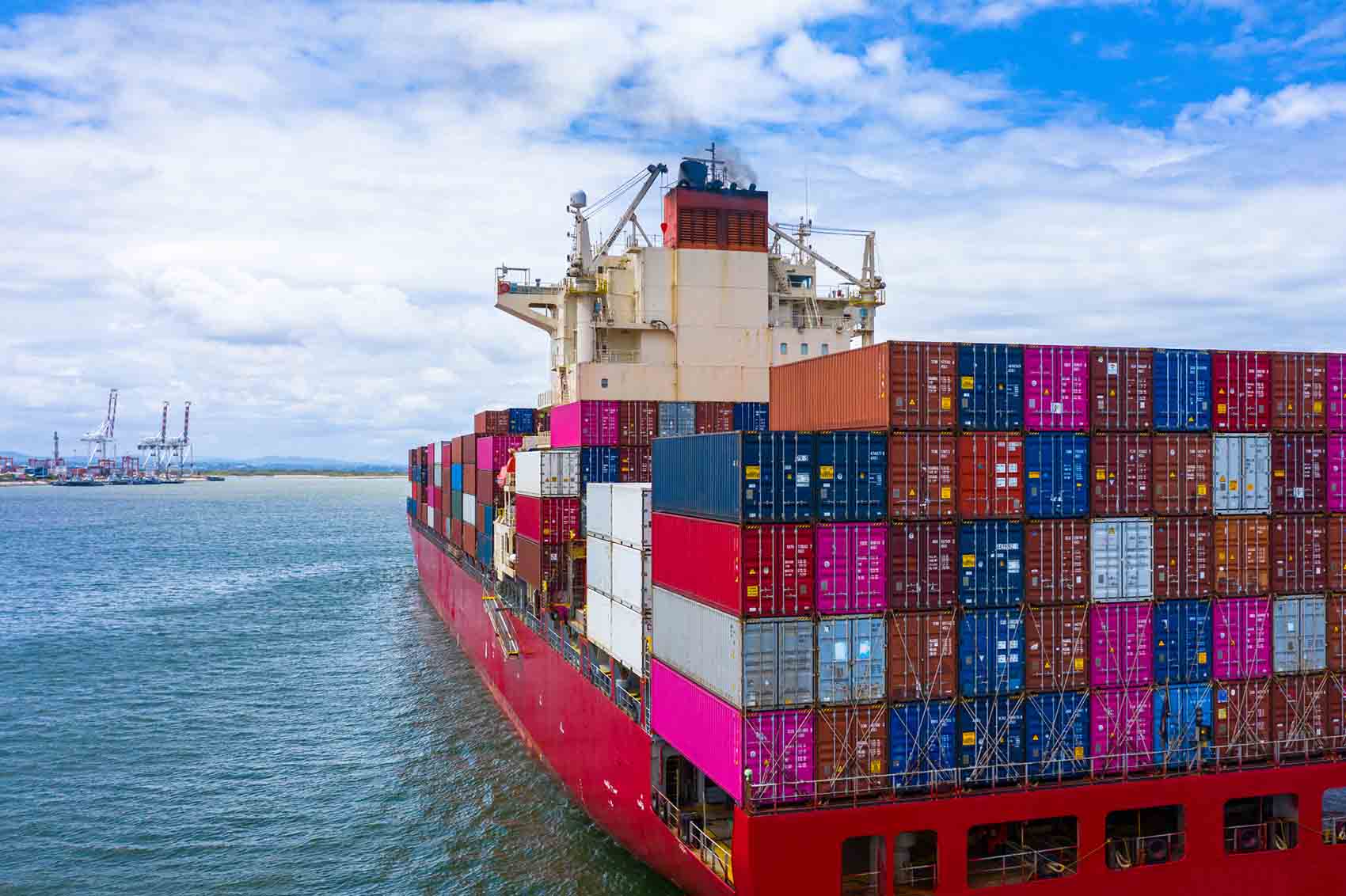Destacado en este post
Ensure Operational Excellence with an All-in-One Consumer Goods ERP
Ensure Operational Excellence with an All-in-One Consumer Goods ERP

Time management is critical in your consumer goods supply chain.
There are only so many hours in a day, and your to-do list never seems to get any smaller.
In a single afternoon, you may have to run a report, track inventory, create a purchase order (PO), edit the master schedule and track a chargeback. It's exhausting, particularly if you have to jump back and forth between platforms and legacy systems, between inboxes and spreadsheets.
Not only are you wasting time jumping between platforms if you don't have all that data and information centralized, but you likely spend valuable minutes finding out exactly where those most-current resources are located.
We want you to be able to use your time productively —and profitably.
Now, close your eyes and imagine that everything you needed was in one place, organized and accessible at a moment's notice. The data was exact, the interface was clean, and the platform was updated in real-time.
We've got great news for you: it's all possible. That's what you get with our all-in-one consumer goods enterprise resource planning (ERP) solution.
The all-in-one ERP software overpowers any combination of systems to manage the demands of your supply chain. An integrated consumer goods ERP outperforms the alternative in 12 significant ways:
1. Standardization of Processes and a Single Source of Truth
There are often many disparate systems managing similar operations without an integrated solution. Not only is it redundant work and a waste of time, but it also leads to chaotic data transfers and a lack of confidence in which data pool is the "right" one.
An all-in-one ERP solution stores all your information in one centralized system, allowing for complete visibility into business operations and warehouse processes. It encourages collaboration and communication between teammates and removes the disparate, legacy systems where information can be easily lost, forgotten and mismanaged.
The entire solution is running off the same information. There's no room for gaps in data or misplaced sticky notes. Data from all your departments is streamlined and organized onto one platform, so you have a single source of truth across your consumer goods supply chain.
2. Mobility, Scalability and Security
The necessity of a safe, scalable platform that you can access anywhere has never been more apparent.
The unprecedented events of 2020 highlighted both pain points and growth points for many consumer goods businesses. In some areas, perhaps you were able to rise to the occasion, embrace unpredictability, and keep working for a better tomorrow. In others, maybe you struggled to make accurate forecasts, anticipate inventory needs, or successfully maintain the ever-precarious work/life balance.
Regardless, we've had to adapt. The ability to access your data no matter where you are—and knowing without question or doubt that your data is safe and secure—is essential with so much of the global population working remotely.
Being tied to an application on a computer isn't good enough anymore. It's not easily accessible for all your employees, and —as we've recently seen — you may not be able to return to the office whenever you'd like.
Your data lives on a centralized cloud server with a software as a service (SaaS) consumer goods ERP solution. Your business software, along with its data, lives in remote servers managed by your service provider and is accessed using a web browser. This provides you with the flexibility to quickly adapt no matter what's going on in the world.
Not only do SaaS solutions make your data easily accessible, but it's also able to scale for businesses experiencing both gradual and rapid growth. Because SaaS involves a remote environment, you're able to have greater flexibility and scalability than you'd otherwise have with on-premise solutions. Sudden upticks with hardware often require additional capacity and technology to keep up.
In the instance of a disaster, a SaaS solution means there's less time dedicated to provision, and there's a reduced recovery time objective. SaaS enables your company to grow with your ERP system, rather than be limited by it, and the best part is this change can happen in real-time.
3. Robust Direct-to-Consumer Fulfillment and Shipping Tools
Ecommerce has sustained a steady growth rate of 23%, and in 2020, 16.1% of all retail sales are expected to happen online. And that was before COVID-19.
More people than ever before have been shopping from home between new safety regulations, government restrictions and stay-at-home orders. The pandemic has only accelerated the shift.
A customer recently told us they were receiving roughly 20,000 orders a day before the pandemic. Now, that number is up to about 300,000 orders a day.
Not only has this business been forced to scale up to accommodate the influx of orders, but it has had to readjust how it's sending those orders.
In the past, most businesses — this customer included— would fill up a pallet and ship it directly to a retailer. Now, the process is slightly more complicated with DTC orders. Instead of shipping a full pallet to a single retailer, distributors must ship full pallets to various retailers (all while meeting strict compliance requirements) AND manage thousands of direct shipments to end consumers.
Distributors must adapt in terms of their boxing, labeling and ensuring on-time, every-time residential delivery. And they must do this thousands of times each day if they're going to fulfill each DTC order successfully.
It's tough. DTC requires a company-wide digital transformation.
But if you have the right tools to create robust, efficient processes—that can scale depending on demand—it's easily manageable. Like anything else, it becomes a part of the day-to-day; you just want to make sure the habits built in the day-to-day are the right ones and don't include inefficient workarounds and legacy systems full of third-party plugins.
Because our consumer goods ERP is designed especially for your industry, the challenges associated with DTC fulfillment and shipping aren't so challenging after all.

It's all about automating processes to create efficiencies in warehouse operations and make more efficient supply chains. An all-in-one ERP supports this completely. It becomes a tool to automate the picking process, pull orders on an automated schedule (based on a summary of how they are ordered).
With the right ERP, you can generate pick instructions for any new DTC order that has inventory allocated to it every 30 or 60 minutes. This means you and your team have more time to focus on production rather than making repeat trips to the same workstation.
Want to know more about how an industry-built ERP can help your consumer goods organization manage direct-to-consumer fulfillment? Here's a one, two, three, four-part blog series on the challenges and merits of DTC. Or another whitepaper on the value of DTC.
Why have we written about this so extensively? Because DTC is the new fulfillment model. We want to make sure you're ready.
Our all-in-one ERP offers a complete solution for consumer goods distributors in high-volume, labor-intensive DTC space. It ensures the efficiency and accuracy your company needs to elevate operations.
4. Electronic Data Interchange (EDI) and Chargeback Management Tools
If you can do this right, if you can succeed in the area of EDI and chargebacks, you're about ten steps ahead of the competition. You're also ensuring there's more money staying in your pocket.
EDI digitizes and simplifies communications between business partners. It's an electronic exchange of business documents that replaces mail, fax and email. It's where you and your business partners exchange pertinent and valuable information regarding orders and shipments. And these days, it's standard documentation.
For retailers, it's confirmation they're getting the right product at the right time.
For you, the consumer goods distributors, this helps to eliminate fines and chargebacks. It's confirmation on your end that you're checking all the boxes, adding the right products, shipping to the right places at the correct times. You're giving retailers what they need, providing your team with documentation opportunities and opening the doors of communication between both parties along the way.
Essentially there are two types of EDI: self-managed and vendor-managed.
Self-managed EDI is relatively involved, but if you have the tools, processes, and experts to onboard new customers, create new maps, keep up with requirements changes and do this all at a moment's notice, you could be successful in managing your own EDI services.
If, however, you want a vendor to coordinate and manage everything for you, then there's an option for that, too. This is vendor-managed EDI, where the vendor is responsible for all things EDI: testing and transaction monitoring, creating and managing maps, offering technical support, scaling up or back and managing communication networks. You name it; your vendor should handle it.
Using built-in, managed EDI is the more effective, more efficient option for some consumer goods companies. Neither option is better or worse than the other; you know your business; it's all about what you need. We're here to support you either way.

Our all-in-one ERP offers both options, with both self-managed and Aptean-managed EDI providing the following:
Automated data entry
Orders streaming directly into the system
Improved shipping accuracy
Near real-time data
Fast information processing
High level of compliance
Here's where things differentiate a bit. Managed EDI services, in addition to the functionality listed above, are also easily scalable, on fixed payment schedules, offer testing and transaction monitoring, provide ongoing map creation and management, and finally, with us, you get around the clock management by EDI specialists. That's invaluable—giving you focus and time back in your day.
It's important to note that if your EDI documents are incorrect or late, you'll likely incur a chargeback. Chargebacks occur for other reasons, too: shipping labels and paperwork don't adhere to retailer requirements, shipments weren't on time or in full, the product was defective. The list is long.
With an industry-specific, fully integrated ERP, you're able to measure, track, dispute and recover retailer chargebacks. You have greater visibility into the effect those chargebacks have on your organization. No longer are they ephemeral charges; their impact is tangible and countable—and not just for those in accounting, but for anyone affected by the charge.
With an all-in-one consumer goods ERP, you can see outstanding chargebacks enterprise-wide. They may seem small — a dollar here, a dollar there — but they could represent losses in the thousands down the road if left unaddressed. A fully integrated ERP can highlight where your business is in the resolution process for these deductions, providing analytics—by reason, customer, status, product, etc. — along the way.
Our consumer goods ERP comes fully equipped with recordkeeping functionality designed to help you maintain thorough documentation every step of the way. To help you seamlessly meet evolving retailer compliance requirements and avoid unnecessary chargebacks. To support strong retailer relationships and satisfy your most demanding customers.
5. Cross-Functional Collaboration and Communication
Consumer goods businesses have become global. No longer is it a one-stop shop; collaboration isn't inhibited or limited by country lines or language barriers.
As work environments and technologies change and evolve, you and your business need to evolve with it. This kind of supply chain globalization affects how your company operates. Some things are going to have to change.
We recommend you focus on one thing: collaboration.
You can improve your operational efficiencies and grow your supply chain capabilities with healthy collaborative practices and processes. Truly collaborative organizations—where suppliers, customers and distributors are connected—are better positioned for success. Robust collaboration tools help you better meet customer demands, automate inventory processes, lower supply chain costs and increase product innovation.
The right consumer goods ERP software has a built-in demand resource planning (DRP) system to automate forecasting. It's a tool that uses industry-standard forecasting methods to turn shared information into accurate projections. Point-of-sale data that is integrated with historical product sales and trends also supports information sharing. To further support collaboration between wholesalers and their suppliers, an all-in-one ERP offers real-time insight into supplier production schedules to ensure that everyone stays on track and within the projected timelines.
In terms of lower supply chain costs, you want an ERP that includes a flexible rule-based environment to provide automatic alerts on inventory status and reorder levels. What could be more important? A robust ERP has built-in tools to consider lead times, supplier performance, on-hand and on-order quality and sales performance, further helping companies share information and collaborate without straining any other internal resources.
Having an all-in-one, fully integrated solution helps consumer goods companies stay on top of the various stages of their supply chain at any and every moment. Dealing with real-time data means decisions are more accurate, supply chains are more efficient, and costs are lower.
You need to be able to access your data anytime, anywhere. Whether you're working from home or on your phone 30,000 feet in the air, a centralized database with near real-time data enables users to work from wherever to meet critical deadlines.
An integrated ERP solution gives you the collaboration, visibility and flexibility that you've been looking for. It's easy for users to work cross-functionally using real-time data and information. Whether you're in the middle of peak season or you have a lull in production, our solutions were made to help you navigate your ever-changing industry.
6. Warehouse Logistics and Management Tools to Support Efficient Operations
The warehouse is where the magic happens. It is the most integral part of the supply chain. It's a blur of movement and action, and it's the place that can either make or break you. Why not shoot for the former?
An all-in-one ERP with built-in warehouse management system (WMS) capabilities enables you to track, manage and evaluate the efficiency of your warehouse that much easier. Its flexibility makes it easy to adapt to the fast-paced change of your warehouse.
The unpredictable ups and downs of 2020 taught us that everything could change at a moment's notice. How you're running your warehouse today may not be how you ran it yesterday or how you run it a year from now. Having an ERP solution that's as flexible as you must be to meet demand is essential. It should enable flexible bin, zone and location management, as well as perform wave picking by product, purchase order number, customer name, customer code, planned trucks or however you'd like to organize it.
You should also be able to streamline workflows, improve data accuracy, and speed physical inventory and cycle counts with wireless warehouse and RFID capabilities. Otherwise, picking and packing processes become onerous and labor-intensive, wasting valuable time and energy in the process.
An all-in-one consumer goods ERP should have built-in WMS capabilities and features. When it comes to making confident, quick decisions on the warehouse floor, finding a solution that ensures your business information is updated in real-time is invaluable. The necessity of this becomes particularly pointed when managing all of your DTC orders.

Not only does an ERP with built-in warehouse management functionality expedite receiving with directed putaway capabilities, but it also counts products during the unloading process using handheld devices (thanks to the aforementioned wireless warehouse capabilities) and maximizes picking and packing efficiencies with integrated pre-pack and cartonization rules.
By leveraging an all-in-one ERP solution with built-in warehouse management functionality, you really can do it all: increase efficiencies, manage costs and complex operations, and scales as your business does.
7. More Robust Forecasting and Inventory Planning Tools
Forecasting. Inventory planning. Demand analysis. Purchasing insight. All are necessary tools if you plan to maximize revenue opportunities and minimize costs.
A consumer goods ERP with built-in forecasting, inventory planning and purchasing capabilities leads to efficient purchasing, streamlined supplier management and integrated inventory forecasting and planning for your enterprise.
Let's face it: the right ERP makes a lot of things easier. But without accurate projections and inventory planning, you can't successfully run a business, which is why these tools are so vital. A consumer goods ERP can make all the calculating, tracking and counting easier and more time-efficient, all while eliminating the risk of human error.
Since your all-in-one ERP provides a centralized hub for housing all your data, it becomes a repository for, basically, anything and everything. You can use that stored historical data to find various trends and patterns in your inventory, making the most of your resources and products.
Knowing your sales history from month-to-month or quarter-to-quarter ensures you keep on track with your targets and helps to promote accuracy when meeting the inventory demands of your customers.
You know what a customer ordered a year ago because that data is stored within your ERP. If a customer wants to make that same order, you know how much product you need to produce to ensure you have the right inventory to fulfill the order. If something is awry, the ERP will notify you that there is a problem and you're not going to be able to fulfill the order, at least not on time, and based on that data, you can react in real-time to get the order on track and out the door as soon as possible.
Tracking long lead times can be really challenging for anyone working within the consumer goods industry. Between everything else that needs to be done each day, forecasting isn't often top of mind. It's nearly impossible to make an accurate forecast without an ERP; at best, you're just making good guesses.
An all-in-one consumer goods ERP tracks product. That's one of the many things it can do. And it takes the historical data associated with tracking products, finds patterns, exact lead times and uses that data to make accurate forecasts about your inventory and demand cycles.
The more you track and record within your ERP, the more accurate your projections become. Because all your data is running through a single, integrated solution, planning your inventory and making accurate forecasts has never been easier.
8. Greater Supplier Production Monitoring Capabilities
Strong supplier production monitoring can be tough to manage. It's not like all the work that's being done in your warehouse—there, you can see what your employees are up to, track inventory, monitor your production lines. It's not so easy when your product is within the hands of another supplier.
This is when an all-in-one consumer goods ERP comes in handy, particularly if it's integrated with robust supplier production monitoring tools. It can, quite literally, change the game for you: it enables you to effectively manage and track your products when they're with your overseas suppliers. You gain deeper visibility with these tools and ensure that you're meeting compliance mandates and requirements for all your supply-side activities.
Integrated supplier production monitoring tools help you improve:
Visibility
You can monitor and track the status of samples, quality assurance outcomes, production dates, shipping schedules, labeling requirements and approvals.
Data capture
Your suppliers should be able to update order statuses into your ERP through a supplier portal, saving you time and stress. You'll know exactly where your purchase orders are in the production cycle.
Response time
The right ERP should enable you to closely monitor product statuses and disruptions earlier in the supply chain to improve your agility in managing unforeseen production issues and opportunities.
Customizable workflows
Your solution needs to work for you. You shouldn't have to bend your business to fit within your ERP. You should be able to customize your workflows and streamline tasks through your supply chain as you need to.
9. Import Management Tools for Greater Visibility
Importing products from overseas suppliers is a complex process. Visibility into overseas production is nearly impossible without an integrated tool to coalesce your processes, data and communications.
But best-in-class ERP software for consumer goods businesses can help you achieve perfect order fulfillment; you're able to get your customers the right products, prices and quantities all at the right time. You should be able to monitor, manage and track your shipments as they move through the supply chain; knowing where it is and when before it even reaches your warehouse.
An all-in-one consumer goods ERP contains vessel, shipment and container tracking tools to grant you the exact kind of visibility you need. With this kind of tracking, you can capture, track and attach documentation on additional charges, notes, credits and associated files for each shipment.
The more information you have, the greater the visibility, the more efficient the import management process. All of this means more money in your pocket. Efficiency often goes hand in hand with profitability.

Determining the landed costs on your products is a critical step in understanding your true profitability. You know this as well as anyone: for consumer goods companies, landed costs can account for a considerable amount of your product investment.
You want an ERP to make it easier for you to gain visibility into your true landed costs to gauge profitability on each of your products accurately, as well as allocate agency fees, shipping expenses, customs fees, duties by harmonization codes, taxes and insurance organized by product, unit, volume, supplier or location.
Angela Boulter, purchasing manager for Dorfman Pacific (one of the world's largest handbag and headwear companies) explains how her company has profited using Aptean Distribution ERP's reporting, purchasing and sales modules, and landed cost calculations.
"Aptean has helped us to be able to use the purchasing module and sales module, expand our business, and help us with our shipments and landed costs," Boulter said. "We're using Aptean Distribution ERP to address some of the issues with the tariffs, to find out when we are importing new styles into our system, are we actually getting the true landed costs?
"The purchasing module, as well as the shipping module, allows us to check the shipment at all times and know exactly where it is. So, our whole company is able to know where their orders are and when they're coming in. It also flows down from the time of sales order to purchasing, all the way down to accounting. We are able to see the whole flow of goods and payment, and see what the true landed costs are for our product to make sure we are being competitive in the marketplace."
It's all about understanding your costs at the detail level. Not only can this help you improve purchasing and pricing decisions, but it can also give you full insight into all your costs to make better, more confident enterprise-wide decisions for improved profitability.
10. Product Lifecycle Management Tools
An ERP with built-in product lifecycle management (PLM) capabilities is critical for product innovation. It's a solution that enables you to monitor product development through the entire life of a product. Integrated PLM gives brand owners the ability to track and share all product changes, documentation and schematics with all stakeholders for improved communication and collaboration.
In the consumer goods industry, PLM is a system that helps organize and track a product's entire lifecycle, from conception to design to production to shipping to finally landing in a consumer's hands and every step in between.
It's essential to have this built-in to your ERP if you're working with production teams abroad. There's too much room for things to be lost or miscommunicated, or misconstrued if you don't have the technology necessary to open communication and track the product as it moves through the various production stages.
A robust consumer goods ERP has all the PLM capabilities you need to maximize productivity, increase visibility and better manage your products. Your data is all in one place, accessible to all relevant people and in near real-time to keep everyone up to date on any project's status at any time.
Built-in PLM capabilities enable you to define and manage the process and steps necessary to create an effective supply chain. Each step should be broken down into a task or series of tasks, each of which is assigned a completion date. These timelines and tasks are tracked within your ERP, which automatically sends out alerts whenever a task is completed. This ensures there's no lag time between one stage of the process and the next, thus guaranteeing more efficient and productive product creation processes.
One of the best parts about this? An all-in-one ERP becomes a repository for all your PLM data—specs, costs, purchase orders, documents, communications, whatever it may be, is stored and saved within your system. There's no additional work involved, and it makes your product histories easily findable and accessible.
Without this technology, it'd be challenging to streamline communication, track timelines and maintain an accurate history. An all-in-one consumer goods ERP takes the complex processes involved in creating products and gives the tools you need to ensure that each task includes the right teammates, is completed on time, and most importantly, is done well.
11. Better Accounting, More Accurate Financials and More Robust Reporting Capabilities
If you lack a fully integrated solution, your data is spread across multiple applications across multiple platforms. This is not only expensive, but it shadows your data; it's not clear, easily accessible or inclusive. You're not able to pull together a standard view of your data. You can't see the full picture.
And you have to be able to see the full picture if you're going to successfully evaluate your profitability. That's paramount.
The real benefit of a robust consumer goods ERP is the ability to take control of your finances in real-time. An ERP with built-in financial tools delivers insightful and actionable information and reports. A fully integrated solution enables you to gain efficiencies based on financial applications and trends to maximize receivables, streamline credit and collections, as well as manage and enliven cash flow.
An all-in-one ERP enables you to pull and update numbers as you need to, and you can feel confident that those numbers are in real-time and include all your enterprise's data. It's all hosted on the same, singular application.
The benefits of this kind of tool are extensive; some of the more powerful profit tools in a robust consumer goods ERP include:
Dependable analytics and insight into real net bottom-line profitability
Improved data sharing and visibility throughout the organization
Instantaneous, real-time information
Improved response times and decision making on processes, products and relationships that erode profit margins
User-friendly tools that make it easy to share reporting in multiple formats to meet stakeholder needs and requirements
12. Stronger Analytics and Business Intelligence
Smart decisions start with strong data. You must utilize the data that your ERP gives you to make confident, forward-thinking decisions for your company.
We've heard from so many folks that they're tracking a ton of things—inventory, labor, output, chargebacks, etc. — and that's great. Really, that's the very first step. But the next step is where real change happens: using that data to make smart decisions to ensure efficiency and profitability.
Because, let's face it, your data is only as good as your ability to use it.
You need an all-in-one ERP that can provide you with insights and analytics to study sales performance and see where you're performing best, improve warehouse operations, and understand and address retailer deductions and chargebacks.
The best industry-leading ERP software is integrated with Microsoft Power BI to enable consumer goods importers and distributors to not only gain the insights and analytics they need but use them. Use them to make confident, data-based decisions to grow their business.
The real benefit of Power BI is that it offers you clarity on what your data actually means. You can dig into it, divide it, color it, create visuals or models and interrogate it. Quite literally, the possibilities are endless. From a high-level overview to a deep-dive into the details, this is an opportunity for more significant analysis.
Aptean Distribution ERP is designed for consumer goods organizations and can give you everything you need. We know that's a bold statement. And we mean every word of it. We're confident in our solution and what it can do for the success and profitability of your consumer goods supply chain.
When you have an ERP with all the necessary features and functionalities built-in, you're able to alleviate the struggles and stresses involved in managing your data. It'll outperform a combination of disparate systems any day of the week.
Not only does an all-in-one consumer goods ERP system create efficient operations and a high-efficiency supply chain, but there's also less room for human error. There's no more manual entry, hand counting and reliance on memory to get the job done. If you have an integrated system where all your technologies talk to each other, all your information will be easier to find and easier to use.
All to give you more time back in your day to focus on the tasks and jobs that really need it.
If you'd like to explore how you can unleash the power of your business with a fully integrated ERP system, reach out to our team of distribution industry experts. We'd love to talk.
¿Todo listo para transformar tu negocio?
Tenemos las soluciones ERP especializadas que necesitas para superar los desafíos de tu sector.



 Ken Weygand | Solutions Architect, Aptean Distribution ERP
Ken Weygand | Solutions Architect, Aptean Distribution ERP